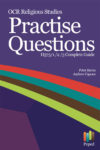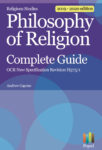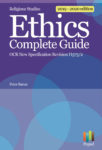Euthanasia muddle
January 23, 2014
The Moral Muddle of Euthanasia
Euthanasia in the UK is in a moral and practical muddle. In this blog I want to explain why, and also invite you to join the debate and also to write subtler arguments about this key topic. For some excellent letters considering the same issues, see the Times letters column today, Thursday January 23rd. So what are the issues which we need to unmuddle?
1. Do active and passive euthanasia amount to the same thing (as James Rachels argues) because they may (depending on the example) have the same intention and consequence?
2. Is the slippery slope argument valid (the argument that when you legalise euthanasia you legalise a process which ends up with old people being pressurised to die)?
3. Is there a difference between euthanasia and assisted dying (and do countries that have legalised euthanasia make this distinction)?
Let’s start with an example. My dear mother died on December 7th after a three month process of very slow dying. During this period she couldn’t eat and she could barely drink – but she received just about enough fluids to stay alive. Whenever she opened her eyes she looked to me like she was suffering a terrible torment but as she couldn’t really speak, it was impossible to be sure. I found myself willing her to die to end this suffering.
The doctor one month before she died put her on an intravenous morphine drip to ease her pain. She was much more settled with this, but spent most of the time asleep. I am sure had she continued with this treatment she would have died more quickly.
But then a bit of a debate started. Wasn’t this active euthanasia – death by increased morphine? The doctor changed and so did the treatment. She was taken off the drip. She became more restless again. To my mind the suffering went up. But she undoubted lived longer – when she died she was thin, emaciated, and effectively died of starvation and dehydration. Which of these was morally the right course of treatment – the more active (non-voluntary) euthanasia of my dying mother or the passive death from dehydration and starvation? To my mind the former active euthanasia was morally and humanely much the better option. To James Rachels it is intention and consequence that matter – so in this case the consequence (less suffering) seems to win even though the intention is somewhat mixed (did I want her to die – probably on balance, yes).
Assisted suicide and euthanasia are not exactly the same thing. Assisted suicide (as in the Oregon rules in the USA) always includes the consent of the patient who then actively takes their own life by administering the drug themselves. It is less hardship for a doctor who might genuinely feel distress about actively administering a drug to a dying person and so causing their death. After all, a doctor promises by the Hippocratic oath to preserve life. Assisted suicide is what happens when someone books in to the Dignitas clinic in Switzerland (well illustrated by the docu-drama A Short Stay In Switzerland). Slow active euthanasia under some circumstances appears to be completely legal in the UK already (example above).
However euthanasia as an idea is ambiguous between active and passive forms. Passive euthanasia includes switching off a life support machine, not feeding my mother intravenously (they wanted to take her into hospital to do this and we refused), in other words “let nature take its course”. Unfortunately – and here’s the moral problem – that course is often horrible (dehydration, starvation) because sometimes people take a long long time to die (fact). Click below to read more:
So we could engage in non-voluntary active euthanasia as in my mother’s first treatment. This is legal in some forms in the UK because the first intention (back to intention again) is to avoid pain. So placing my mother on an intravenous morphine drip is standard treatment for the dying – to alleviate the acute discomfort, restlessness and pain associated with the (often) awful experience. According to the doctrine of double effect (accepted by the Catholic church as moral) it is perfectly okay to accelerate death if the primary intention is to stop pain. And so it should be. Because horrendous suffering is morally unacceptable.
So here is my conclusion: euthanasia should be legalised in the UK but only for those who are terminally ill. This can either be voluntary and active (Dignitas clinic) or involuntary and active (the morphine drip, maybe with the family’s consent or at their request). This is not a blanket legalisation of euthanasia for those depressed (as Daniel James may have been), those who are helpless or without a hopeful future, or who feel old and useless.
And there would be no slippery slope – an argument which is misused and has an emotive feel about it which is hindering a proper moral debate. Further reading is given below:
http://www.pages.drexel.edu/~cp28/euth1.htm
Image: my mother painted by my father 1953






0 Comments